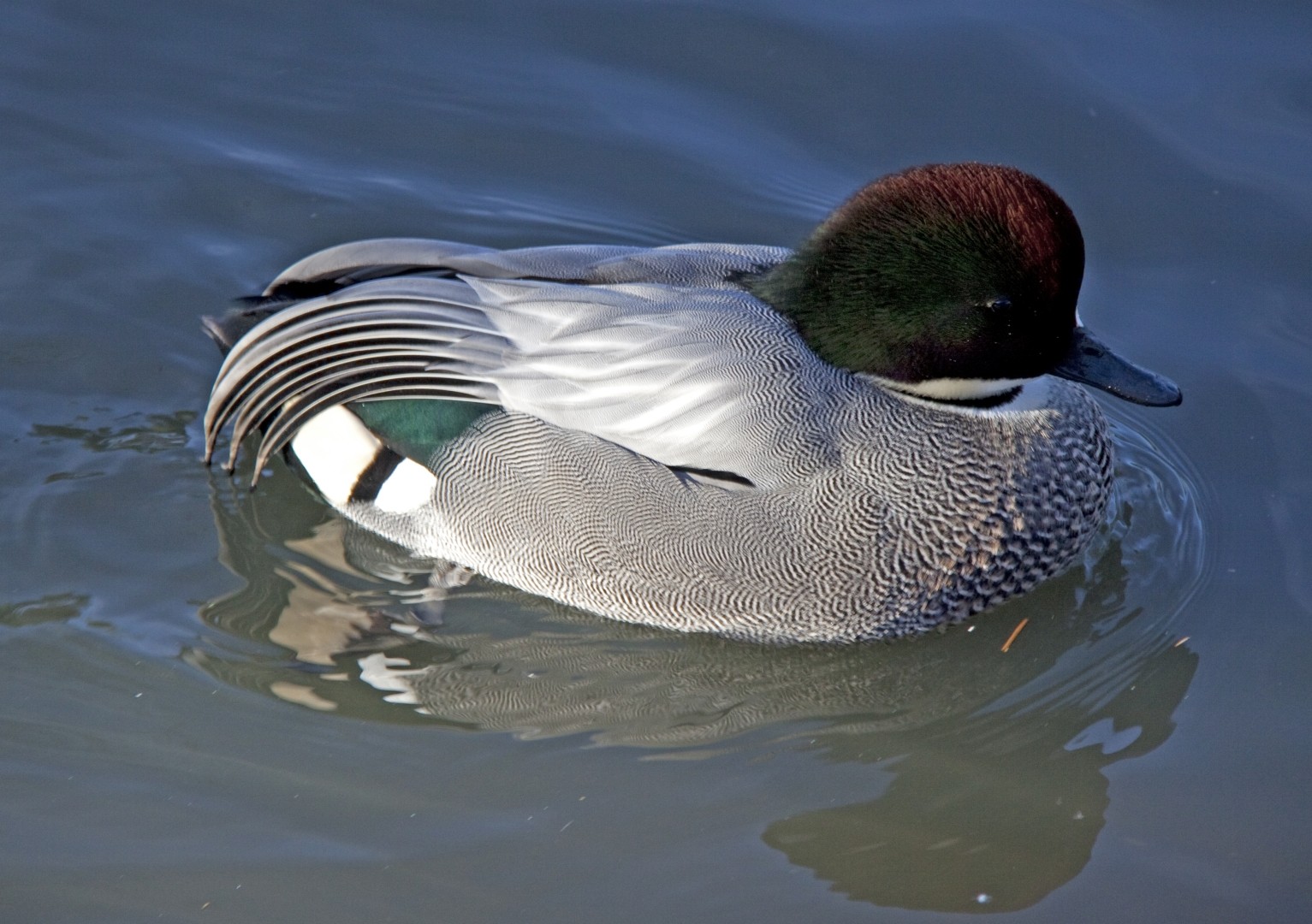Falcated Duck
A species of Anas Scientific name : Mareca falcata Genus : Anas
Falcated Duck, A species of Anas
Botanical name: Mareca falcata
Genus: Anas
Content
Description General Info
Description
The falcated duck or falcated teal (Mareca falcata) is a gadwall-sized dabbling duck from the east Palearctic (East Siberia and Mongolia to North Japan; wintering to India) 
Size
41 - 81 cm
Life Expectancy
5-10 years
Nest Placement
Ground
Feeding Habits
Falcated Duck predominantly feeds on small invertebrates, larvae, crustaceans, and mollusks, supplemented with plant foods such as seeds, grains, and nuts. Falcated Duck forages for vegetation or insects near water, showcasing unique dietary adaptability.
Habitat
Lowland wetlands, water meadows, lakes
Dite type
Herbivorous
General Info
Feeding Habits
Bird food type
Distribution Area
The falcated duck breeds in eastern Asia. It nests in eastern Russia, in Khabarovsk, Primorskiy, Amur, Chita, Buryatia, Irkutsk, Tuva, eastern Krasnoyarsk, south central Sakha Sakhalin, extreme northeastern North Korea and northern China, in northeastern Inner Mongolia, and northern Heilongjiang, and in northern Japan, Hokkaidō, Aomori, and the Kuril Islands. It is widely recorded well outside its normal range, but the popularity of this beautiful duck in captivity clouds the origins of these extralimital birds. This dabbling duck is strongly migratory and winters in much of Southeast Asia. In India: Uttar Pradesh, Bihār, Assam, eastern Haryāna. Also in northern Bangladesh, northern and central Myanmar, northern Laos to the Mekong River, northern Vietnam (from about Hanoi north), and China: Hainan, Taiwan, Yunnan, Guangxi, Guangdong, Fujian, Jiangxi, northern Hunan, Hubei, Zhejiang, Anhui, Jiangsu, Shandong, southern Hebei, Shanxi, northern Shaanxi. It is gregarious outside the breeding season and will then form large flocks. It is estimated that there are about 89,000 falcated ducks in total; this is much higher than the previous population estimate of 35,000 worldwide. During a survey done in Central China, a migratory area in the winter for the falcated duck, the numbers of animals sighted was minimal. In 2004 only 4 were recorded, and in 2005 only 10. This is a species of lowland wetlands, such as water meadows or lakes, and usually feeds by dabbling for plant food or grazing. The National Nature Reserves supported high proportions of eastern China's populations of globally threatened Anatidae species (IUCN, 2009): 30% of the near threatened falcated duck (Anas falcata) populations. There is about twenty-seven percent of falcated duck species existing in the National Nature Reserves. 
Species Status
The falcated duck is currently in a state of near threatened on the IUCN's Red List. They are protected under the Migratory Bird Treaty Act, and their overall population seems to be (for the most part) stable and growing. Falcated duck populations are present in a number of wildlife preservers, national parks and other protected areas, and zoos. 
